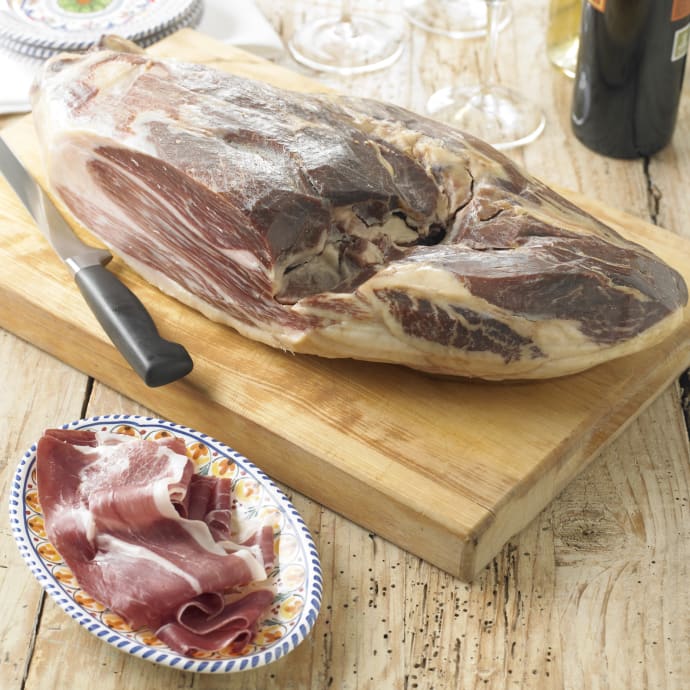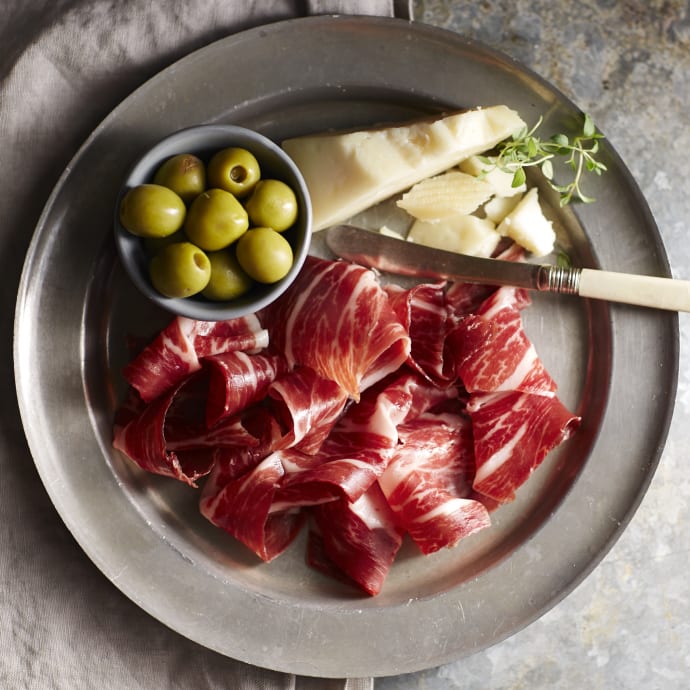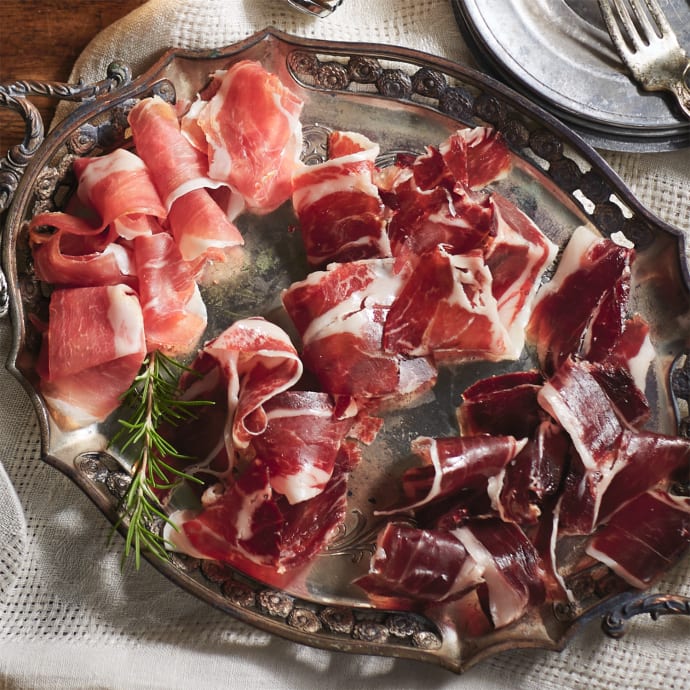Three Kings Sale - Up to 40% Off! Shop Sale

An Art Critic's Taste for Madrid's Masterpieces
The Washington Post
-
November 10, 2004
Blake Gopnik
Madrid -- It's every critic's nightmare. You're asked to visit a museum devoted to a subject you know nothing about. It's full of objects without a single link to all the other things you've written on. And there are no texts or catalogue to help you along. You've got nothing more than fuzzy impressions of what makes one exhibit different from another, and a vague, untutored sense of which things you like and which you don't.
For the duration of your visit, that is, you're in the same boat as most visitors to most museums.
Except that you're supposed to write about the stuff so convincingly that a million or so readers will put off checking out Woodward or Kornheiser to spend some time with you.
So here goes: "Salty and nutty, with a fruity sweetness underlying it, a beautiful rose-hip-tea transparency and a pleasant tooth."
That, I'm afraid, is about as far as my critical acumen will go, despite repeat visits to various branches of Madrid's Museo del Jamon, the Museum of Ham. The Museo sometimes seems to rival the Prado -- no, make that displace the Prado -- in the affections of Madrilenos. For all the masterpieces hanging on its walls, come lunchtime the Prado is rarely as mobbed as the museum hung with hams.
The Museo del Jamon (pronounced "hamON") is not truly a museum. It's a typically Spanish blend of deli, restaurant and bar, conceived 26 years ago to cater to the Spaniards' ham obsession. The Museo is an entirely for-profit enterprise, with several outlets across the city. But it has a dedication to the product it displays that bears witness to an aesthetic, curatorial purpose. If it doesn't have a sense of mission quite as high-flown as the National Gallery of Art, it's at least as noble as Washington's moneymaking Spy Museum.
The walls of the Museo are hung with hams in pretty much the way art galleries show pictures. Floor to ceiling, upstairs and down, the walls and rafters proudly display the vast range of cured hog legs for sale, sometimes complete with tiny black trotters.
No doubt the hams need to be stored in the open to keep correctly. And maybe the cigarette smoke adds a certain tang. But there's clearly museum-style pleasure to be had in contemplating the exquisite subtleties of all the wares on show. The spread is like a grand old Dutch still life, with the advantage that after you've had a look, you get to taste as well.
There are rare, government-certified iberico de bellota hams. Such deluxe hams must be cut from heirloom breeds of long-legged, black-hoofed Iberico pigs, range-fed only on acorns (bellotas) from the same oak trees harvested for cork. They are dried for many months in mountain air, and can come from only six areas in Spain whose terroirs merit classification. (The generic term serrano, used to describe cured ham in Spain, means "from the mountains.")
Other fine meats at the Museo may not rate official certification, but they still proudly announce their place of origin: One wall displays a raft of hams labeled murciano (from Murcia, a small area on Spain's eastern coast); another side of the bar is decorated with a mass of swine legs from the region of Extremadura, where Spain meets Portugal (the only source for great serrano ham, according to some Spaniards -- especially the Extremadurans). True jamon critics clearly know their schools of ham, the way a connoisseur of paintings might prefer the masters of Rome to anyone from Venice, while recognizing the virtues of both.
The Museo serves hams at every level of cost and quality. There are young, machine-sliced meats, pale and light as Italian prosciutto crudo. And there is leathery, mahogany-brown stuff sawed at by countermen whose knives have been sharpened almost to the point of disappearance. (Like a museum neophyte who still prefers Renoir to Manet, I rather liked the paper-thin, regular slices of younger flesh. It might take another year or 10 of sophisticated tasting to fully appreciate the ancient, salty, chewy flakes of jamon granadino that I was also served.)
The ham of Spain has all the markers of Old Master art. Like fine painting, jamon has a wide range of meanings -- at least for those brought up to make them out. It can speak about proud hispanidad, but also about its breakdown into a range of fiercely local loyalties. It also speaks of how the modern plays off against the old, like a Renaissance picture on an ancient Roman theme. (Those hanging hams are lit by raw fluorescent lights, Rembrandts in a roomful of Flavins; they are surrounded by lively cell phone conversation.) Jamon speaks to class and status: A veteran workman spending a morning's pay on a plate of old-fashioned ham is different from a pampered teen who buys jamon iberico to show off his taste and his parents' newfound wealth.
Like other works of art, jamon iberico also provides purely formal, sensory pleasures. A wide-ranging tasting of jamon feels like a stroll through the Prado: There are hams in swirling pink and white like something out of Rubens, and hams in stormy, late-Titian red; there are hams that have the lightness on the tongue of a Murillo virgin rising up to Heaven, and precious, tough old hams that evoke Ribera's hermit saints.
All this isn't mere hyperbole. I'm not just citing the Old Masters as a metaphor for how good jamon can get. It's meant as a serious assertion of this ham's claims to artfulness. Jamon works within the kinds of parameters that make for a single, coherent, aesthetic language -- you could say the jamon laws create a kind of formal grammar -- while allowing a vast range of subtle difference to take root within those bounds.
Like museum-certified fine art, jamon has ancient pedigree, which makes each new leg of pork the latest link in a chain of stable tradition. And it has variety, because of a past punctuated now and then, here and there, by transforming innovation.
Experts more or less agree on a canon of jamon greatness. And fiercely disagree on where each ham ranks within the canon.
There's even a market that reflects that canon: The true connoisseur will pay well over $100 for a hand-sliced pound of masterpiece jamon. (At the highest end, jamonistas don't frequent the Museo del Jamon; it's a mid-level chain that services a less extravagant clientele.) The only thing that's lacking in the art world of jamon, as far as I can tell, is a radical contemporary wing. I've yet to come across a juniper-cured haunch of iberico pig finished with a vanilla-saffron rub.
But maybe it will come, if critics develop tastes and terms to do it justice.
Spanish serrano ham -- though not certified jamon iberico, which does not yet meet USDA importation rules -- can be had at the Dean & DeLuca store at 3276 M St. NW, at the Balducci's chain in the Washington area or on the Web at www.tienda.com and other gourmet sites.
© 2004 The Washington Post Company
Madrid -- It's every critic's nightmare. You're asked to visit a museum devoted to a subject you know nothing about. It's full of objects without a single link to all the other things you've written on. And there are no texts or catalogue to help you along. You've got nothing more than fuzzy impressions of what makes one exhibit different from another, and a vague, untutored sense of which things you like and which you don't.
For the duration of your visit, that is, you're in the same boat as most visitors to most museums.
Except that you're supposed to write about the stuff so convincingly that a million or so readers will put off checking out Woodward or Kornheiser to spend some time with you.
So here goes: "Salty and nutty, with a fruity sweetness underlying it, a beautiful rose-hip-tea transparency and a pleasant tooth."
That, I'm afraid, is about as far as my critical acumen will go, despite repeat visits to various branches of Madrid's Museo del Jamon, the Museum of Ham. The Museo sometimes seems to rival the Prado -- no, make that displace the Prado -- in the affections of Madrilenos. For all the masterpieces hanging on its walls, come lunchtime the Prado is rarely as mobbed as the museum hung with hams.
The Museo del Jamon (pronounced "hamON") is not truly a museum. It's a typically Spanish blend of deli, restaurant and bar, conceived 26 years ago to cater to the Spaniards' ham obsession. The Museo is an entirely for-profit enterprise, with several outlets across the city. But it has a dedication to the product it displays that bears witness to an aesthetic, curatorial purpose. If it doesn't have a sense of mission quite as high-flown as the National Gallery of Art, it's at least as noble as Washington's moneymaking Spy Museum.
The walls of the Museo are hung with hams in pretty much the way art galleries show pictures. Floor to ceiling, upstairs and down, the walls and rafters proudly display the vast range of cured hog legs for sale, sometimes complete with tiny black trotters.
No doubt the hams need to be stored in the open to keep correctly. And maybe the cigarette smoke adds a certain tang. But there's clearly museum-style pleasure to be had in contemplating the exquisite subtleties of all the wares on show. The spread is like a grand old Dutch still life, with the advantage that after you've had a look, you get to taste as well.
There are rare, government-certified iberico de bellota hams. Such deluxe hams must be cut from heirloom breeds of long-legged, black-hoofed Iberico pigs, range-fed only on acorns (bellotas) from the same oak trees harvested for cork. They are dried for many months in mountain air, and can come from only six areas in Spain whose terroirs merit classification. (The generic term serrano, used to describe cured ham in Spain, means "from the mountains.")
Other fine meats at the Museo may not rate official certification, but they still proudly announce their place of origin: One wall displays a raft of hams labeled murciano (from Murcia, a small area on Spain's eastern coast); another side of the bar is decorated with a mass of swine legs from the region of Extremadura, where Spain meets Portugal (the only source for great serrano ham, according to some Spaniards -- especially the Extremadurans). True jamon critics clearly know their schools of ham, the way a connoisseur of paintings might prefer the masters of Rome to anyone from Venice, while recognizing the virtues of both.
The Museo serves hams at every level of cost and quality. There are young, machine-sliced meats, pale and light as Italian prosciutto crudo. And there is leathery, mahogany-brown stuff sawed at by countermen whose knives have been sharpened almost to the point of disappearance. (Like a museum neophyte who still prefers Renoir to Manet, I rather liked the paper-thin, regular slices of younger flesh. It might take another year or 10 of sophisticated tasting to fully appreciate the ancient, salty, chewy flakes of jamon granadino that I was also served.)
The ham of Spain has all the markers of Old Master art. Like fine painting, jamon has a wide range of meanings -- at least for those brought up to make them out. It can speak about proud hispanidad, but also about its breakdown into a range of fiercely local loyalties. It also speaks of how the modern plays off against the old, like a Renaissance picture on an ancient Roman theme. (Those hanging hams are lit by raw fluorescent lights, Rembrandts in a roomful of Flavins; they are surrounded by lively cell phone conversation.) Jamon speaks to class and status: A veteran workman spending a morning's pay on a plate of old-fashioned ham is different from a pampered teen who buys jamon iberico to show off his taste and his parents' newfound wealth.
Like other works of art, jamon iberico also provides purely formal, sensory pleasures. A wide-ranging tasting of jamon feels like a stroll through the Prado: There are hams in swirling pink and white like something out of Rubens, and hams in stormy, late-Titian red; there are hams that have the lightness on the tongue of a Murillo virgin rising up to Heaven, and precious, tough old hams that evoke Ribera's hermit saints.
All this isn't mere hyperbole. I'm not just citing the Old Masters as a metaphor for how good jamon can get. It's meant as a serious assertion of this ham's claims to artfulness. Jamon works within the kinds of parameters that make for a single, coherent, aesthetic language -- you could say the jamon laws create a kind of formal grammar -- while allowing a vast range of subtle difference to take root within those bounds.
Like museum-certified fine art, jamon has ancient pedigree, which makes each new leg of pork the latest link in a chain of stable tradition. And it has variety, because of a past punctuated now and then, here and there, by transforming innovation.
Experts more or less agree on a canon of jamon greatness. And fiercely disagree on where each ham ranks within the canon.
There's even a market that reflects that canon: The true connoisseur will pay well over $100 for a hand-sliced pound of masterpiece jamon. (At the highest end, jamonistas don't frequent the Museo del Jamon; it's a mid-level chain that services a less extravagant clientele.) The only thing that's lacking in the art world of jamon, as far as I can tell, is a radical contemporary wing. I've yet to come across a juniper-cured haunch of iberico pig finished with a vanilla-saffron rub.
But maybe it will come, if critics develop tastes and terms to do it justice.
Spanish serrano ham -- though not certified jamon iberico, which does not yet meet USDA importation rules -- can be had at the Dean & DeLuca store at 3276 M St. NW, at the Balducci's chain in the Washington area or on the Web at www.tienda.com and other gourmet sites.
© 2004 The Washington Post Company
Other Press
The Winter Travel Shortlist: Problem-Solving Essentials I’m Packing This Season
Forbes
-
November 20, 2025
54 Gifts for People Who Have Everything
Wirecutter
-
November 6, 2025
What Andrew Zimmern Can’t Live Without
The Strategist
-
June 30, 2025
8 Tasty Ways To Travel The World With Food
Forbes
-
June 17, 2025
Featured Products
 SHIPS FREE
SHIPS FREECinco Jotas Bone-In 100% Ibérico de Bellota Jamón - FREE SHIPPING!
JM-106
(4)
$1,599.00$1,599.00
 SHIPS FREE
SHIPS FREEBone-In Jamón Ibérico Ham by Fermín - FREE SHIPPING!
JM-11
(9)
$799.00$799.00
 SHIPS FREE
SHIPS FREEBoneless Jamón Ibérico Ham by Fermín - FREE SHIPPING!
JM-12
$799.00$799.00
 BEST SELLER
BEST SELLERSliced Ibérico de Bellota Ham by Peregrino, Nitrate Free - 2 oz
JM-52
(47)
$42.00$42.00
 BEST SELLER
BEST SELLERSliced Ibérico Ham by Peregrino, Nitrate Free - 2 oz
JM-23
(38)
$28.00$28.00
 BEST SELLER
BEST SELLERJamón Tasting Trio of Sliced Ham
JM-25
(36)
$85.00$85.00
 BEST SELLER
BEST SELLERCured Meats of Spain Sampler
JM-45
(39)
$109.00$109.00







